A non-surgical face lift is a cosmetic procedure that involves minimally invasive techniques to target areas of the face. It is designed to temporarily influence facial tissues and provide changes in appearance without the need for surgical intervention. This guide provides educational information about the procedure, its potential approaches, and considerations to discuss with a qualified medical practitioner.
Non-surgical face lifts can involve a range of techniques, such as dermal injections, fillers, or other minimally invasive treatments. These procedures are performed in clinical settings by trained practitioners and are intended to modify the contours or volume of facial tissues. Individual responses and outcomes vary depending on anatomy, treatment type, and other factors.
Before considering a non-surgical face lift, individuals should consult with a qualified medical professional. A practitioner can assess medical history, current medications, and any pre-existing conditions to determine whether the procedure is suitable. They can also provide guidance on potential alternatives and discuss the temporary and variable effects of these treatments.
This guide outlines key aspects of non-surgical face lifts, including procedure options, potential risks, recovery considerations, and alternatives. The information is intended for educational purposes and does not imply guaranteed outcomes or aesthetic improvements.
What Is a Non-Surgical Face Lift?
A non-surgical face lift is a minimally invasive procedure that targets facial tissues to modify appearance temporarily. Because the procedure does not involve surgery, it does not require large incisions or general anaesthesia, and recovery time is generally shorter than with surgical options.
There are several approaches to non-surgical face lifts, including injectable treatments, dermal fillers, and other minimally invasive techniques. A qualified medical practitioner can assess individual suitability and provide guidance on which options may be appropriate based on medical history, facial anatomy, and personal considerations.
How Do Non-Surgical and Surgical Face Lifts Differ?
A surgical face lift, also known as rhytidectomy, is a procedure in which a qualified surgeon makes incisions to modify facial and neck tissues. This procedure may involve adjusting underlying muscles, repositioning fat, or removing excess skin. Surgical face lifts require general anaesthesia and often involve an overnight hospital stay, as well as a longer recovery period.
Non-surgical face lifts, on the other hand, use minimally invasive techniques such as injectables or dermal treatments to temporarily alter facial appearance. These procedures do not require large incisions or general anaesthesia, and recovery time is generally shorter.
Surgical and non-surgical approaches serve different purposes: surgical procedures tend to provide longer-lasting structural changes, while non-surgical options offer temporary modifications that may be considered for milder concerns or for those seeking less invasive options.
Who Are Considered for a Non-Surgical Face Lift?
Non-surgical face lifts may be discussed with a qualified medical practitioner for individuals experiencing various age-related or structural changes in facial appearance. These can include:
Areas of facial skin that appear less firm
Changes in the contour of the jawline or cheeks
Shading or hollowness around the eyes
Reduced volume in the cheeks
Thinner lips
Lines or creases on the forehead, around the eyes, or near the mouth
A practitioner will assess medical history, skin condition, and other individual factors to determine whether non-surgical procedures may be suitable.
Who May Need to Take Precautions Before a Non-Surgical Face Lift
Certain skin conditions may require additional assessment before considering a non-surgical face lift. Individuals with the following conditions should discuss their suitability with a qualified medical practitioner:
Active acne or skin inflammation
Skin rashes, including contact dermatitis
Cold sore outbreaks
Skin burns, including those from radiation therapy
Eczema or psoriasis
Moles, freckles, or skin tags
Non-surgical face lifts may have variable effects for individuals with:
Deep facial wrinkles
Sagging or loose skin
Significant scarring
A practitioner can review medical history, examine the skin, and provide guidance on whether a non-surgical approach is appropriate, as well as potential alternatives if necessary.
Are Non-Surgical Face Lifts Common?
Non-surgical face lifts are increasingly offered by qualified practitioners as a minimally invasive option for addressing facial changes. In recent years, there has been a noticeable growth in demand across Australia.
These procedures can include treatments for facial lines, volume restoration, and skin resurfacing. The outcomes and suitability vary between individuals, and a qualified practitioner can provide guidance on which options may be appropriate.
How Does a Practitioner Perform a Non-Surgical Face Lift?
Non-surgical face lift procedures vary depending on an individual’s skin characteristics, treatment goals, and medical suitability. These procedures are usually performed in a clinical setting by qualified practitioners. Some methods may cause mild discomfort, while others are generally well tolerated.
During a consultation, a practitioner can provide information about a range of techniques, including:
Treatment for expression lines: Injections may be administered to certain facial muscles to temporarily reduce muscle activity in areas such as the forehead, between the eyebrows, or around the eyes. The duration of effects varies between individuals.
Chemical peels: Controlled chemical solutions are applied to the outer skin layers. This process can be used to support skin renewal and address surface irregularities. Multiple sessions may be required, and outcomes vary between individuals.
Volumisers (dermal fillers): Soft tissue fillers containing biocompatible substances may be used to add volume to facial areas such as the cheeks, lips, or under the eyes. The duration and effects of these treatments differ between individuals.
Fat injections (fat grafting): Fat can be harvested from one part of the body and reintroduced into the face under clinical supervision. This procedure is more invasive than dermal fillers and may require additional considerations, such as recovery time.
Laser skin resurfacing: Controlled beams of light are applied to the skin to support removal of superficial layers and may influence collagen production. Effects and suitability are individual and assessed by the practitioner.
Microdermabrasion: A minimally invasive technique that exfoliates the skin using a mechanical device. Multiple sessions may be recommended, depending on individual skin needs.
Microneedling: A device with fine needles creates microchannels in the skin to support natural skin processes. The number of sessions and spacing between treatments is determined by the practitioner, based on skin type and treatment goals.
For all non-surgical face lift options, a qualified practitioner will discuss suitability, potential effects, number of sessions, and expected recovery considerations tailored to each individual.
What Are the Risks of a Non-Surgical Face Lift?
The potential risks and side effects of non-surgical face lift procedures vary depending on the specific treatment used. While these procedures are generally performed in clinical settings under professional supervision, they are not without risk.
Possible effects that may occur include:
Mild bleeding at injection or treatment sites
Temporary swelling
Redness or irritation of the skin
Bruising
Skin peeling or dryness
Formation of small lumps or temporary facial asymmetry
Skin blistering or burns in some procedures
Infection (rare)
In less common instances, individuals may experience:
Headache
Nausea
Fever or flu-like symptoms
Skin rashes
The likelihood and severity of side effects depend on the type of procedure, individual skin characteristics, and adherence to aftercare instructions. A qualified practitioner will discuss these considerations and monitor for any complications.
What Are the Considerations of a Non-Surgical Face Lift?
Non-surgical face lifts may be considered for individuals seeking minimally invasive approaches to address changes in facial skin. Potential considerations include:
Procedures do not involve large surgical incisions or general anaesthesia.
Recovery times are typically shorter compared with surgical facelifts.
Various treatment options exist, and each may address different aspects of facial skin, such as volume, texture, or fine lines.
Outcomes can vary between individuals and are generally temporary.
The suitability, type of procedure, and expected effects should be discussed with a qualified medical practitioner.
What Is the Recovery Process Like?
Recovery after a non-surgical face lift can vary depending on the type of procedure performed and individual skin characteristics. Common temporary effects may include:
Mild soreness, tenderness, or discomfort in the treated area
Redness or slight puffiness
Bruising, flaking, or small scabs, depending on the technique used
Most individuals are able to resume normal daily activities shortly after treatment. Recovery measures that a qualified practitioner may suggest include:
Applying cold packs to reduce swelling
Using topical products as recommended to support skin comfort
Taking over-the-counter pain relief if necessary
It is important to follow post-procedure guidance provided by your practitioner and to monitor the skin for any unusual or persistent effects.
What Is the Duration of a Non-Surgical Face Lift’s Results?
The length of time that results from a non-surgical face lift last can vary depending on the type of procedure and individual factors such as skin type and lifestyle.
Some treatments, such as chemical peels or injections for expression lines, may require multiple sessions to maintain effects.
Other procedures, including certain dermal fillers or fat injections, may provide longer-lasting outcomes.
A qualified practitioner can provide guidance on the expected duration of each procedure, the need for follow-up sessions, and factors that may influence how long effects are noticeable.
When Should I Contact My Practitioner?
After a non-surgical face lift, individuals should seek advice from a qualified medical practitioner if they experience any of the following:
Flu-like symptoms
Unusual or persistent swelling of the face
Signs of infection (e.g., increased redness, warmth, or discharge at the treatment site)
Pain that worsens over time or does not improve
Numbness or partial loss of facial movement
Non-surgical face lift procedures are minimally invasive techniques that may support skin volume and the appearance of sagging skin or wrinkles. The effects of these procedures are temporary, and a practitioner can provide guidance on the appropriate follow-up schedule or maintenance treatments based on individual circumstances.
Flawless Aesthetics: Non-Surgical Face Lift Options
Flawless Aesthetics provides a range of non-surgical face lift procedures in Sydney. These procedures are minimally invasive and performed by qualified practitioners.
Available treatments include:
Injections for dynamic lines: These procedures target areas such as frown lines, crow’s feet, and forehead lines to temporarily influence muscle activity. Individual responses and effects vary.
Dermal treatments: Soft tissue fillers and other dermal procedures may be used to temporarily support facial volume and address the appearance of wrinkles or folds.
All non-surgical face lift options are temporary and subject to individual variation. A consultation with a qualified practitioner is recommended to discuss suitable procedures, potential effects, and safety considerations.
For further information or to schedule a consultation, please contact Flawless Aesthetics at 02 8041 3293 between 10:30 a.m. and 7:00 p.m. AEST, Monday through Friday. A member of the team can provide guidance and answer questions regarding non-surgical face lift procedures.





















